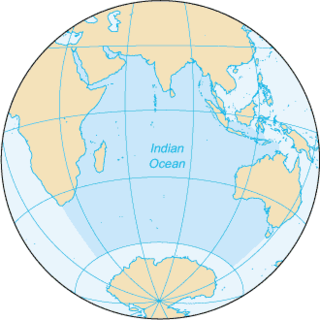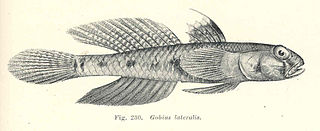
Favonigobius is a genus of gobies native to fresh, brackish and marine waters around the Indian Ocean and the western Pacific Ocean. Commonly called "sand gobies", this term more alternatively refers to the family Kraemeriidae, a relative of the true gobies.

Exyrias is a genus of gobies mostly native to marine waters of the Indian Ocean and the western Pacific Ocean with one freshwater species (E. volcanus) known from the Philippines.

Knipowitschia is a genus of marine, fresh and brackish water gobies native to Eurasia. Dwarf gobies that live in the Indian Ocean are the world's smallest fish, growing to be 1 cm in length. The genus name almost certainly honours Nikolai Mikhailovich Knipovich (1862-1938), a biologist who led a number of expeditions to the Caspian Sea.

Pomatoschistus is a genus of gobies native to fresh, brackish and marine waters of Europe, the eastern Atlantic Ocean and the Mediterranean Sea.

Redigobius is a genus of fish in the goby family, Gobiidae, known commonly as dualspot gobies. They are native to the western Indo-Pacific region, where they occur in estuaries and freshwater habitats just above the tidal influence.
Taenioides is a genus of gobies native to fresh, brackish, and marine waters of the coastal areas of the Indian Ocean and the western Pacific Ocean.
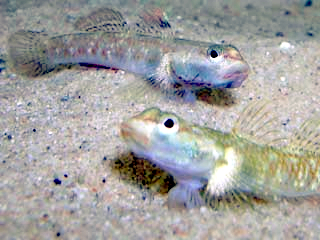
The Gobiiformes are an order of fish that includes the gobies. The order, which was previously considered a suborder of Perciformes, is made up of 2,211 species that are divided into seven different families. Phylogenetic relationships of the Gobiiformes have been elucidated using molecular data. Gobiiforms are generally small fish and are mostly marine (saltwater) fishes, but roughly 10% of the population inhabit fresh waters. This order is made up of mainly benthic or sand-burrowing fish. Benthic fish live on the bottom of a body of water. Like in most benthic organisms, gobiiforms do not have a gas bladder or swim bladder which keeps them from suspending in the water column, so they must stay on the bottom.

Amoya is a genus of gobies in the family Gobiidae native to the Indian Ocean and the western Pacific Ocean.

Chromogobius is a small genus of gobies native to the eastern Atlantic Ocean through the Mediterranean and Adriatic seas to the Black Sea.

Lesueurigobius is a genus of gobies native to the eastern Atlantic Ocean. The generic name honours the French naturalist Charles Alexandre Lesueur (1778-1846), for whom the type species, Lesueurigobius suerii, was named, Georg Duncker's name Lesueuria being preoccupied by a genus of comb jellies.

Koumansetta is a small genus of gobies native to the Indian Ocean and the western Pacific Ocean. The name of this genus honours the Dutch ichthyologist and goby taxonomist Frederik Petrus Koumans (1905-1977) of the Rijksmuseum van Natuurlijke Historie in Leiden, Netherlands, who had written a description of Koumansetta rainfordi following a visit to the Australian Museum in Sydney in 1938 but did not name it. The outbreak of World War 2 meant that Whitley's correspondence with Koumans was interrupted, so he named this genus after him, noting “which will enshrine memories of happier days of our meetings in Leiden and Sydney”.
Arenigobius is a genus of gobies native to the Indian Ocean and the western Pacific Ocean.
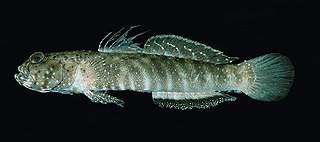
Cryptocentroides is a genus of gobies native to the western Indian Ocean and the western Pacific Ocean.

Deltentosteus is a genus of gobies native to the eastern Atlantic Ocean and the Mediterranean Sea.
Feia is a genus of gobies native to shallow coastal waters of the Indian Ocean and the western Pacific Ocean.
Lebetus is a genus of gobies native to the eastern Atlantic Ocean.

The wolfsnout goby, also known as the dognsout goby or cup-sponge goby, is a species of goby native to the Indian Ocean and the western Pacific Ocean. This species lives on large fan-shaped or floppy sponges, particularly Phyllospongia foliascens and Phyllospongia papyracea, growing on reefs at depths down to 15 metres (49 ft). This species grows to a length of 3.5 centimetres (1.4 in) SL. This species is the only known member of its genus. It spans benthically and is a solitary species.
Palutrus is a genus of gobies native to the Indian Ocean and the western Pacific Ocean.
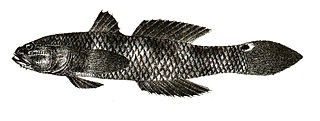
Parachaeturichthys is a genus of gobies native to deep waters of the Indian Ocean and the western Pacific Ocean.

Paragobiodon is a genus of gobies native to reef habitats of the Indian Ocean and the western Pacific Ocean.
